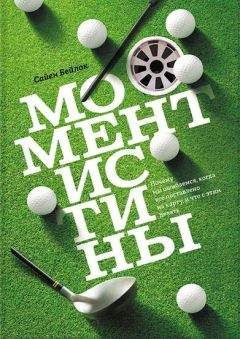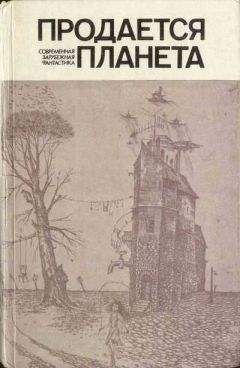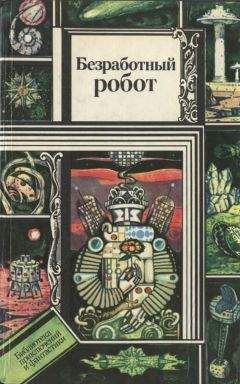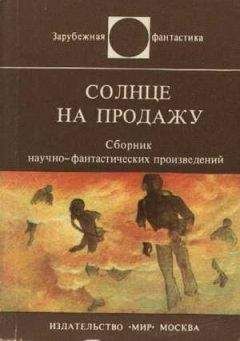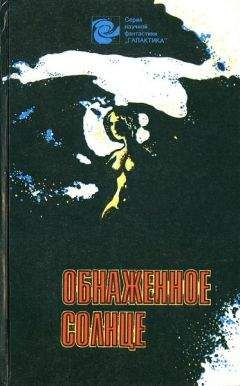135. Calvo-Merino B., Glaser D. E., Grezes J. et al. Action observation and acquired motor skills: An FMRI study with expert dancers // Cerebral Cortex, 2005. Vol. 15. Pp. 1243–1249. Приводится с разрешения.
136. Yarrow K., Brown P., Krakauer J. W. Inside the brain of an elite athlete: The neural processes that support high achievement in sports // Nature Reviews Neuroscience, 2009. Vol. 10. Pp. 585–596. Зеркальные нейроны, изначально обнаруженные у макак, работают как во время выполнения человеком определенных задач, так и во время наблюдения за такими же действиями других лиц.
137. Baumeister R. E. Choking under pressure: Self-consciousness and paradoxical effects of incentives on skillful performance // Journal of Personality and Social Psychology, 1984. Vol. 46. Pp. 610–620. Обсуждение см.: Schlenker B. R. et al. Championship pressures: Choking or triumphing in one’s own territory? // Journal of Personality and Social Psychology, 1995. Vol. 68. Pp. 632–641; Baumeister R. E. Disputing the effects of championship pressures and home audiences // Journal of Personality and Social Psychology, 1995. Vol. 68. Pp. 644–648; Schlenker B. R., Phillips S. T., Boneicki K. A., Schlenker D. R. Where is the home choke? // Journal of Personality and Social Psychology, 1995. Vol. 68. Pp. 649–652.
138. Butler J. L., Baumeister R. F. The trouble with friendly faces: Skilled performance with a supportive audience // Journal of Personality and Social Psychology, 1998. Vol. 75. Pp. 1213–1230.
139. Jackson R., Beilock S. L. Attention and performance // D. Farrow, J. Baker, and C. MacMahon, eds. Developing Elite Sports Performers: Lessons from Theory and Practice. New York: Routledge, 2008. Pp. 104–118.
140. Beilock S. L., Carr T. H., MacMahon C., Starkes J. L. When paying attention becomes counterproductive: Impact of divided versus skill-focused attention on novice and experienced performance of sensorimotor skills // Journal of Experimental Psychology: Applied, 2002. Vol. 8. Pp. 6–16.
141. Gray R. Attending to the execution of a complex sensorimotor skill: Expertise differences, choking and slumps // Journal of Experimental Psychology: Applied, 2004. Vol. 10. Pp. 42–54.
142. Бернштейн Н. А. Физиология движений и активность. М. : Наука, 1990.
143. Collins D. V. et al. Examining anxiety associated changes in movement patterns // International Journal of Sport Psychology, 2001. Vol. 32. No. 3. Pp. 223–242.
144. Pijpers J. R., Oudejans R. R. D., Holsheimer F., Bakker F. C. Anxiety performance relationships in climbing: A process-oriented approach // Psychology of Sport and Exercise, 2003. Vol. 4. No. 3. Pp. 283–304.
145. Johnson J. G., Raab M. Take the first: Option-generation and resulting choices // Organizational Behavior and Human Decision Processes, 2003. Vol. 91. Pp. 215–229. Обсуждение см.: Gigerenzer G. Gut Feelings. New York: Viking, 2007.
146. Poldrack R. et al. The neural correlates of motor skill automaticity // Journal of Neuroscience, 2005. Vol. 25. Pp. 5356–5364.
147. Krigs T. et al. Cortical activation patterns during complex motor tasks in piano players and control subjects: A functional magnetic resonance imaging study // Neuroscience Letters, 2000. Vol. 278. Pp. 189–193.
148. Дополнительно см.: Hatfield B. D., Hillman C. H. The psychophysiology of sport: A mechanistic understanding of the psychology of superior performance // R. N. Singer, H. A. Hausenblas, C. M. Janelle, eds. Handbook of Sport Psychology. New York: Wiley, 2001. Pp. 362–386. См. также: Deeny S. P. et al. Electroencephalographic coherence during visuomotor performance: A comparison of cortico-cortical communication in experts and novices // Journal of Motor Behavior, 2008. Vol. 41. Pp. 106–116.
149. Chen J. et al. Effects of anxiety on EEG coherence during dart throw // 2005 World Congress, International Society for Sport Psychology, Sydney, Australia, August 2005.
150. Rietschel J. T. et al. Electrocortical dynamics during competitive psychomotor performance // Society for Neuroscience, Washington, D.C., 2008.
151. Jackson R., Beilock S. L. Attention and performance // D. Farrow, J. Baker, C. MacMahon, eds. Developing Elite Sports Performers. New York: Routledge, 2008. Pp. 104–118.
152. Masters R. S. W., Polman R. C. J., Hammond N. V. ‘Reinvestment’: A dimension of personality implicated in skill breakdown under pressure // Personality and Individual Differences, 1993. Vol. 14. Pp. 655–666. Это первый вариант. Шкала Reinvestment Scale для оценки двигательной активности представлена в главе 2. Перепечатано с разрешения.
153. Jordet G. When superstars flop: Public status and choking under pressure in international soccer penalty shootouts // Journal of Applied Sport Psychology, 2009. Vol. 21. Pp. 125–130.
154. Stone J., Lynch C. I., Sjomeling M., Darley J. M. Stereotype threat effects on black and white athletic performance // Journal of Personality and Social Psychology, 1999. Vol. 77. Pp. 1213–1227.
155. Beilock S. L. et al. On the causal mechanisms of stereotype threat: Can skills that don’t rely heavily on working memory still be threatened? // Personality & Social Psychology Bulletin, 2006. Vol. 32. Pp. 1059–1071.
156. Дополнительно см.: Smith A. M. et al. The ‘yips’ in golf: A continuum between a focal dystonia and choking // Sports Medicine, 2003. Vol. 33. Pp. 13–31. См. также Stinear C. M. et al. The yips in golf: Multimodal evidence for two subtypes // Medicine & Science in Sports and Exercise, 2006. Pp. 1980–1989.
157. Worthy D. A., Markman A. B., Maddox W. T. Choking and excelling at the free throw line // International Journal of Creativity & Problem Solving, 2009. Vol. 19. Pp. 53–58.
Глава 8
158. For free throws: 50 years of practice is no help // New York Times, 2009. March 4 // http://www.nytimes.com/2009/03/04/sports/basketball/04freethrow.html.
159. Elite learners under pressure. English Institute of Sport // http://www.eis2win.co.uk/pages/.
160. Beilock S. L., Carr T. H. On the fragility of skilled performance: What governs choking under pressure? // Journal of Experimental Psychology: General, 2001. Vol. 130. Pp. 701–725.
161. Wan C. Y., Huon G. F. Performance degradation under pressure in music: An examination of attentional processes // Psychology of Music, 2005. Vol. 33. Pp. 155–172.
162. McKinney E. H., Davis K. J. Effects of deliberate practice on crisis decision performance // Human Factors, 2003. Vol. 45. Pp. 436–444.
163. Jueptner M. et al. Anatomy of motor learning: Frontal cortex and attention to action // Journal of Neurophysiology, 1997. Vol. 77. Pp. 1313–1324. См. также Yarrow K., Brown P., Krakauer J. W. Inside the brain of an elite athlete: The neural processes that support high achievement in sports // Nature Reviews Neuroscience, 2009. Vol. 10. Pp. 585–596.
164. Berry S., Wood C. The cold-foot effect // Chance, 2004. Vol. 17. Pp. 47–51. Исследователи проанализировали 2003 удара, произведенные за два сезона. Из них 1565 были удачными (78%). Также было произведено 139 свободных ударов, 101 из них результативный (73%). Когда защищающаяся команда объявляла перед свободными ударами тайм-аут (38 случаев), то цели достигли только 24 удара (63%).
165. Wegner D. M. How to think, say, or do precisely the worst thing for any occasion // Science, 2009. Vol. 325. Pp. 48–51.
166. Beilock S. L. et al. On the causal mechanisms of stereotype threat: Can skills that don’t rely heavily on working memory still be threatened? // Personality & Social Psychology Bulletin, 2006. Vol. 32. Pp. 1059–1071.
167. Mesagno C., Marchant D., Morris T. Alleviating choking: The sounds of distraction // Journal of Applied Sport Psychology, 2009. Vol. 21. Pp. 131–147.
168. Jackson R. C., Ashford K. J., Norsworthy G. Attentional focus, dispositional reinvestment and skilled motor performance under pressure // Journal of Sport & Exercise Psychology, 2006. Vol. 28. Pp. 49–68.
169. Gucciardi D. F., Dimmock J. A. Choking under pressure in sensorimotor skills: Conscious processing or depleted attentional resources? // Psychology of Sport and Exercise, 2008. Vol. 9. Pp. 45–59.
170. Wulf G., Prinz W. Directing attention to movement effects enhances learning: A review // Psychonomic Bulletin and Review, 2001. Vol. 8. Pp. 648–660.
171. Flegal K. E., Anderson M. C. Overthinking skilled motor performance: Or why those who teach can’t do // Psychonomic Bulletin & Review, 2008. Vol. 15. Pp. 927–932.
172. Beilock S. L., Wierenga S. A., Carr T. H. Memory and expertise: What do experienced athletes remember? // J. L. Starkes, K. A. Ericsson, eds. Expert performance in sports: Advances in Research on Sport Expertise. Champaign, Ill.: Human Kinetics, 2003. Pp. 295–320.
173. Golfers take aim at victories with the help of a rifleman // New York Times, 2007. May 4.
174. Davis H. et al. FMRI bold signal changes in elite swimmers while viewing videos of personal failure // Brain Imaging and Behavior, 2008. Vol. 2. Pp. 84–93. См. также Miller G. Can Neuroscience Provide a Mental Edge? // Science Magazine, 2008. Vol. 321.
175. P. Kruse et al. β-Blockade used in precision sports: Effect on pistol shooting performance // American Physiological Society, 1986. Pp. 417–420.
176. James I. M., Pearson R. M., Griffith D. N. W., Newbury P. Effect of Oxprenolol on stage-fright in musicians // Lancet, 1977. Pp. 952–954.
Глава 9
177. Bransford J. D., Johnson M. K. Contextual prerequisites for understanding: Some investigations of comprehension and recall // Journal of Verbal Learning and Verbal Behavior, 1972. Vol. 11. Pp. 717–726.
178. Дополнительно см.: Paller K. A., Wagner A. D. Observing the transformation of experience into memory // Trends in Cognitive Science, 2002. Vol. 6. Pp. 93–102.
179. Дополнительно см.: Niedenthal P. M. Embodying emotion // Science, 2007. Vol. 316. Pp. 1002–1005.
180. Chartrand T. L., Bargh J. A. The chameleon effect: The perception-behavior link and social interaction // Journal of Personality and Social Psychology, 1999. Vol. 76. Pp. 893–910.
181. Дополнительно см. Niedenthal P. M. Embodying emotion // Science, 2007. Vol. 316. Pp. 1002–1005. Обратите внимание, что данное явление имеет место в тех культурах, где улыбка — общепринятая норма, даже по отношению к незнакомцам.
182. Zajonc R. B., Adelmann P. K., Murphy S. T., Niedenthal P. M. Convergence in the physical appearance of spouses // Motivation and Emotion, 1987. Vol. 11. Pp. 335–346.
183. Wegner D. M. How to think, say, or do precisely the worst thing for any occasion // Science, 2009. Vol. 325. Pp. 48–51.
184. Beilock S. L., Afremow J. A., Rabe A. L., Carr T. H., ‘Don’t miss!’ The debilitating effects of suppressive imagery on golf putting performance // Journal of Sport and Exercise Psychology, 2001. Vol. 23. Pp. 200–221.
185. Bakker F. C., Oudejans R. R. D., Binsch O., van der Kamp J. Penalty shooting and gaze behavior: Unwanted effects of the wish not to miss // International Journal of Sport Psychology, 2006. Vol. 37. Pp. 265–280.
186. Kirschbaum C., Pirke K. M., Hellhammer D. H. The ‘Trier Social Stress Test’ — a tool for investigating psychobiological stress responses in a laboratory setting // Neuropsychobiology, 1993. Vol. 28. Pp. 76–81.
187. Fiocco A. J., Joober R., Lupien S. J. Education modulates cortisol reactivity to the Trier Social Stress Test in middle-aged adults // Psychoneuroendocrinology, 2007. Vol. 32. Pp. 1158–1163.
188. Ditzen B. et al. Adult attachment and social support interact to reduce psychological but not cortisol responses to stress // Journal of Psychosomatic Research, 2008. Vol. 64. No. 5. Pp. 479–486.
189. Kirschbaum C. et al. Sex-specific effects of social support on cortisol and subjective responses to acute psychological stress // Psychosomatic Medicine, 1995. Vol. 57. Pp. 23–31.
190. Дополнительно см.: Уэйнберг Р. С., Гоулд Д. Основы психологии спорта и физической культуры. Учебник для студентов, преподавателей, работников физической культуры. Киев : Олимпийская литература, 1998.
191. Klein K., Boals A. Expressive writing can increase working memory capacity // Journal of Experimental Psychology: General, 2001. Vol. 130. Pp. 520–533.
192. Wager T. D. et al. Brain mediators of cardiovascular responses to social threat: Part I: Reciprocal dorsal and ventral sub-regions of the medial prefrontal cortex and heart-rate reactivity // Neuroimage, 2009. Vol. 47. Pp. 821–835; Wager T. D. et al. Brain mediators of cardiovascular responses to social threat: Part II: Prefrontal-subcortical pathways and relationship with anxiety // Neuroimage, 2009. Vol. 47. Pp. 836–851.
193. Fear of sexual failure // http://www.4-men.org/sex-performance-anxiety.html.
194. Дополнительно см.: Hedon F. Anxiety and erectile dysfunction: A global approach to ED enhances results and quality of life // International Journal of Impotence Research, 2003. Vol. 15. Pp. S16–S19.
195. Ochsner K., Gross J. Cognitive emotion regulation: Insights from social cognitive and affective neuroscience // Current Directions in Psychological Science, 2008. Vol. 17. Pp. 153–158.
